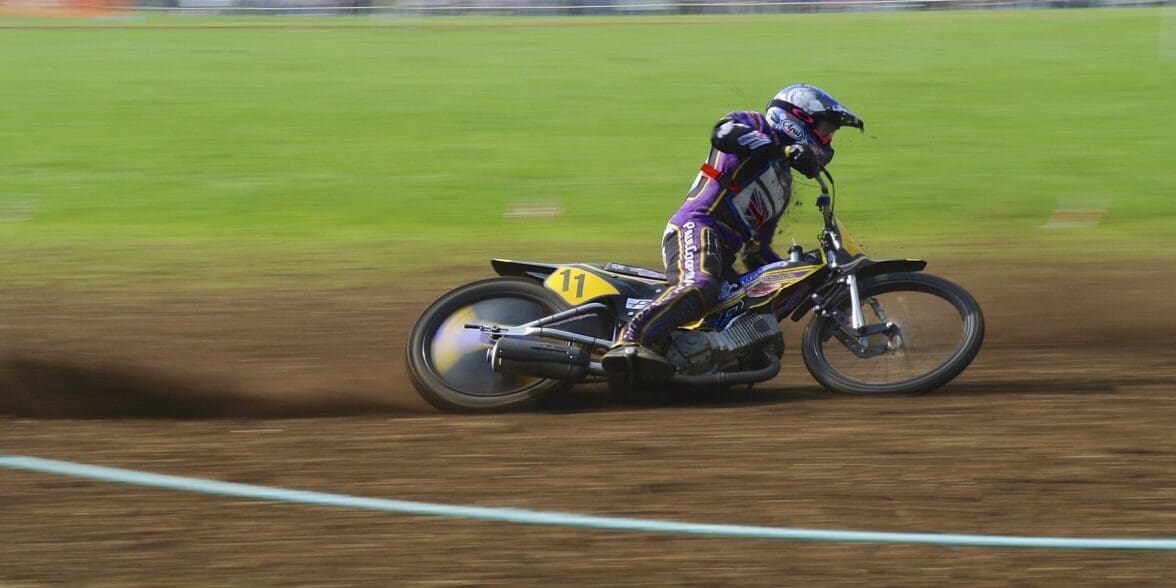It’s just after WWI in sunny England, and you’re absolutely gagging to go motorcycle racing. In modern times, this sort of exciting activity is pretty well catered to in most western countries, but back then, things weren’t so developed when it came to going fast on a motorcycle. Sure, you could just do it on a public road and pray that you didn’t get nicked by the cops or have an unfortunate encounter with a rare-but-still-very-solid automobile. But what if you wanted to keep it legal? What then?
Now if there’s one thing England usually has plenty of, it’s grass. An English summer seen from the air is greener than an explosion at a Kawasaki factory. And seeing as though it’s before the era of built-for-purpose motorcycle racing tracks (save maybe a few car racing establishments with an open mind), you figure that racing your bike in a big, grassy field is as good an idea as any. Congratulations, you’ve just invented grasstrack racing.
Growing Grass (for Racing)
Grasstrack became an official racing genre when the Auto Cycle Union in Britain banned racing on public roads in 1925. Spoilsports. So keen-as-mustard motorcycle racers turned to privately owned grass fields and in 1927, the Whitgift Club held the first recognised grasstrack meeting on an old golf course near Croydon. Is it just me, or does tearing up an old golf course on a bunch of loud, fast bikes sound like an amazing idea?
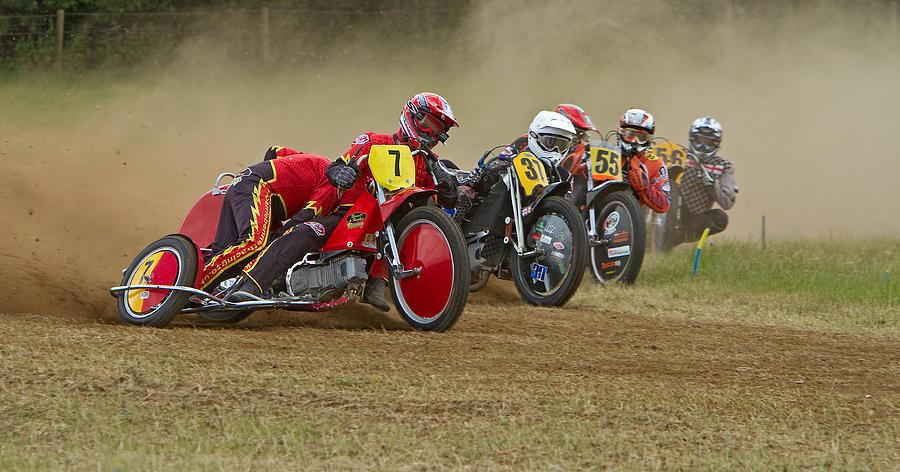
So like a whole raft of motorcycle racing, grasstrack was to emerge from the sheer will and bloody-minded determination of early 20th Century motorcyclists to go fast and put themselves and their machines in mortal danger. The number of modern-day, not-bitumen racing genres that have emerged from this need is gobsmacking: apart from grasstrack you can also count speedway, flat track, trials racing, scrambling, motocross, enduro, ice racing and hill climbs. All this from the simple act of wondering if you could go as fast off road as you could on one.
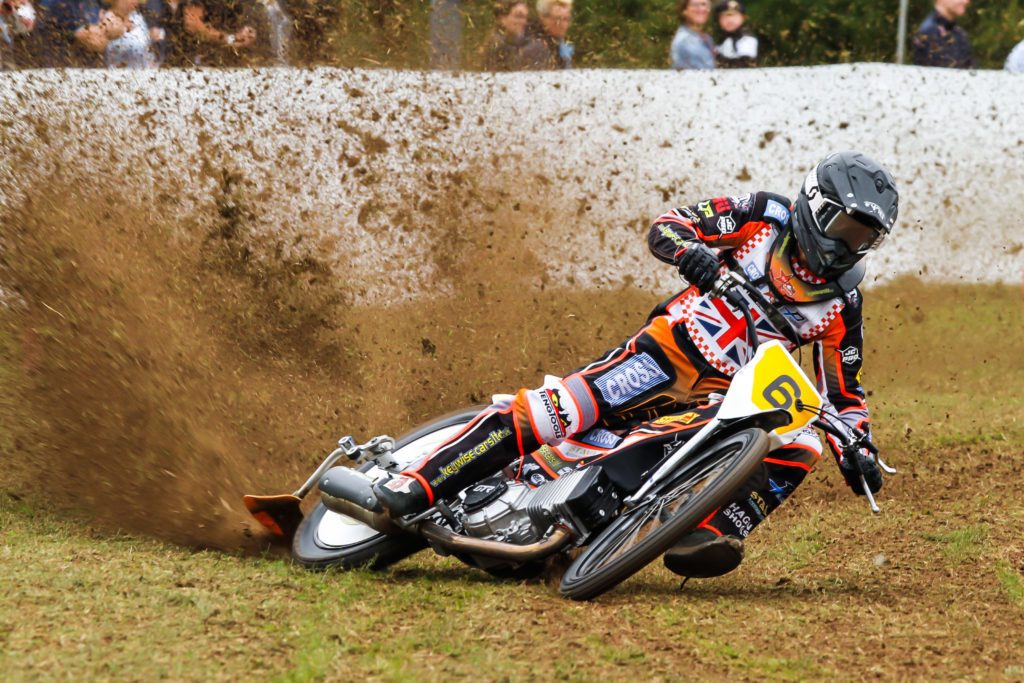
Who’s Your Daddy?
Informally, you could probably make a very strong case for grasstrack racing to be seen as the origin of all offroad circuit racing; mainly due to the informal nature of its hosting requirements. With nothing more than an open field and some basic markers stuck into the turf, 1920s riders were holding events between local protagonists. Sure, those in the know will probably tell you that “scramble” races were being held before WWI, but as they were more point-to-point affairs, grasstrack and its “circuit” approach to going fast seems to be ground zero.
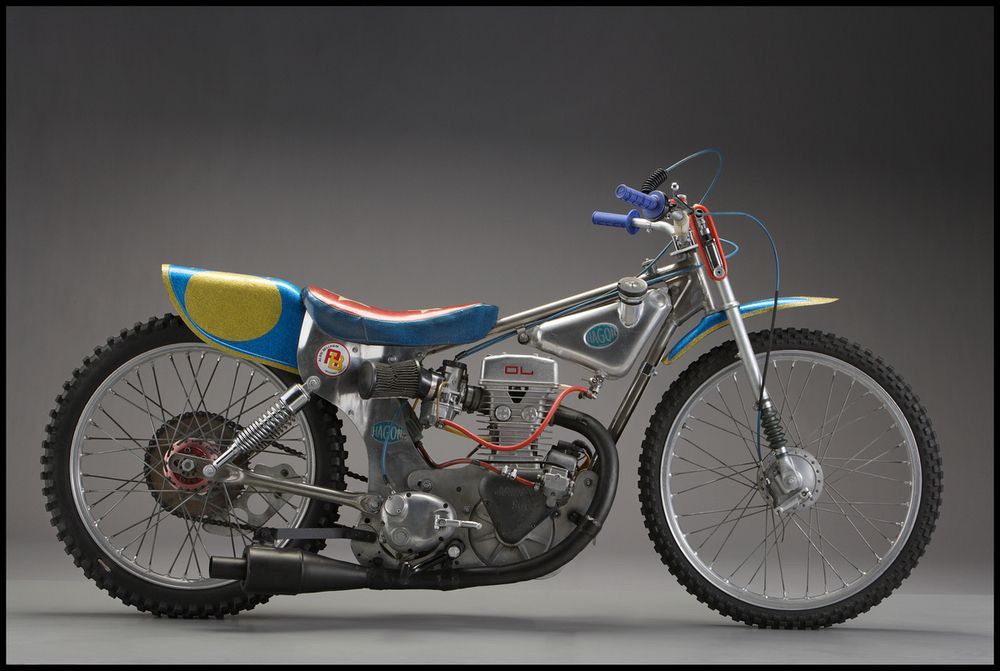
The genre’s popularity took off in the 1920s, and before long, things were starting to become organized. The anti-clockwise tracks took on a kidney-shaped appearance so as to give racers some right hand corners to contend with, and there were also tracks that were intentionally laid out over gently undulating terrain to give riders a little more of a challenge. And as the racing was mostly held on farms and in fields, the events were seasonal—as the grass (and sometimes hay) they raced on would be in a perfect state for speed immediately after the farmers had run their harvesters over them.
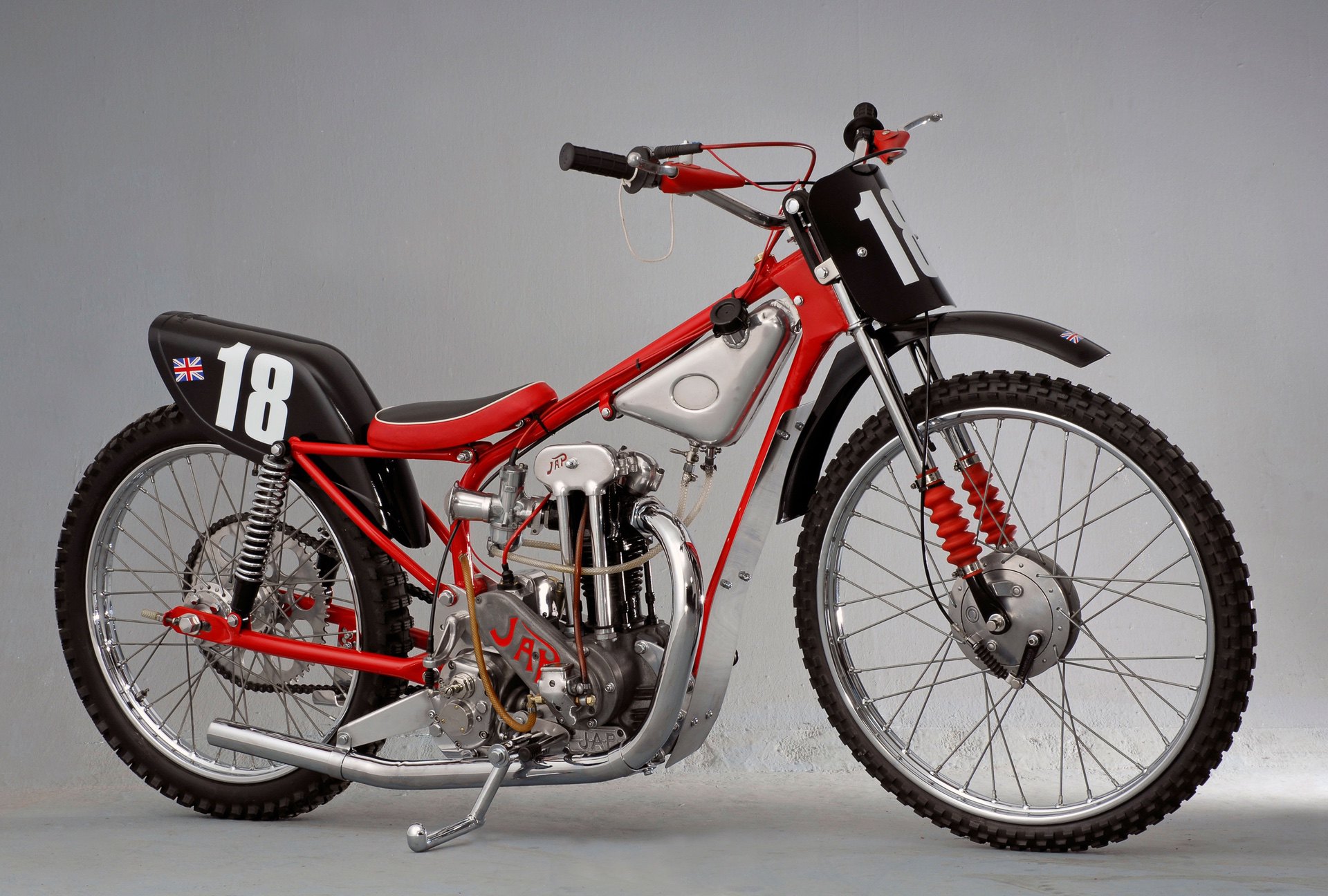
Same Same but Different
Now clearly there’s a bunch of similarities between grasstrack and speedway racing. Surely they are pretty much the same thing, bar a bit of cow food, yes? Well, no. And while they clearly do share common roots (pun fully intended), grasstrack bikes differ significantly from speedway bikes. Yes, they do share their looks to a degree, but speedway bikes have no suspension and one gear. Grasstrack bikes have front and rear shockers (of course) and a two-speed ‘box. They also run under different engine capacity classes.
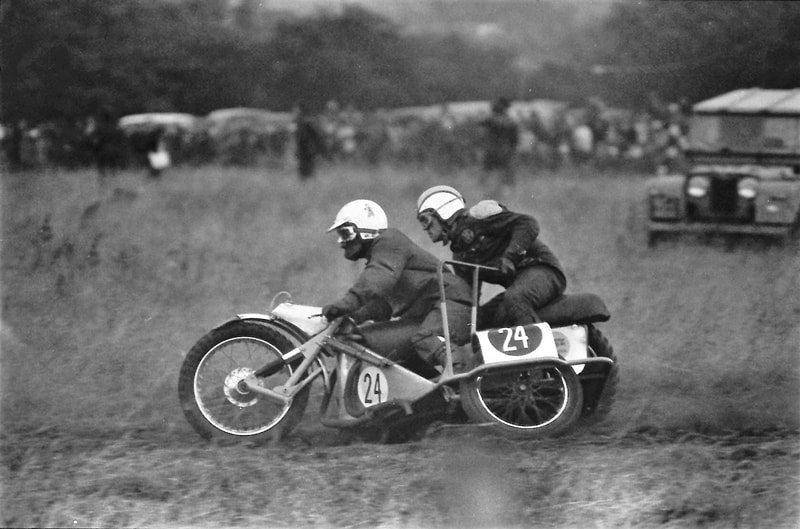
According to online sources, modern Grasstrack racing has three solo classes at 250cc, 350cc and 500cc together with three sidecar classes; a left-handed 500cc and 1000cc (turning left) and right-handed 1000cc (turning right). And if you are wondering just how exciting a liter bike with two people on it and going full tilt on grass is, the answer is a resounding “very, very exciting”.
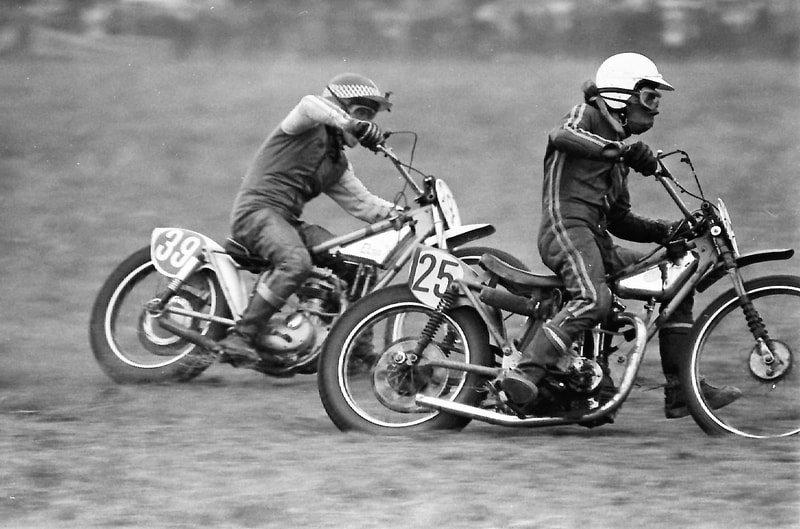
Spinning in Circles
Somewhat quizzically for such a niche sport, you’ll see that the British sidecar motorcycle variants come in both left and right-handed configurations. The sport’s history explains this rather eccentric occurrence as being a result of mainland Europeans racing in the sport and some cross-channel pollination. Indeed the European sport of “Long Track racing” is more or less identical to Grasstrack (bar a few espressos and croissants).
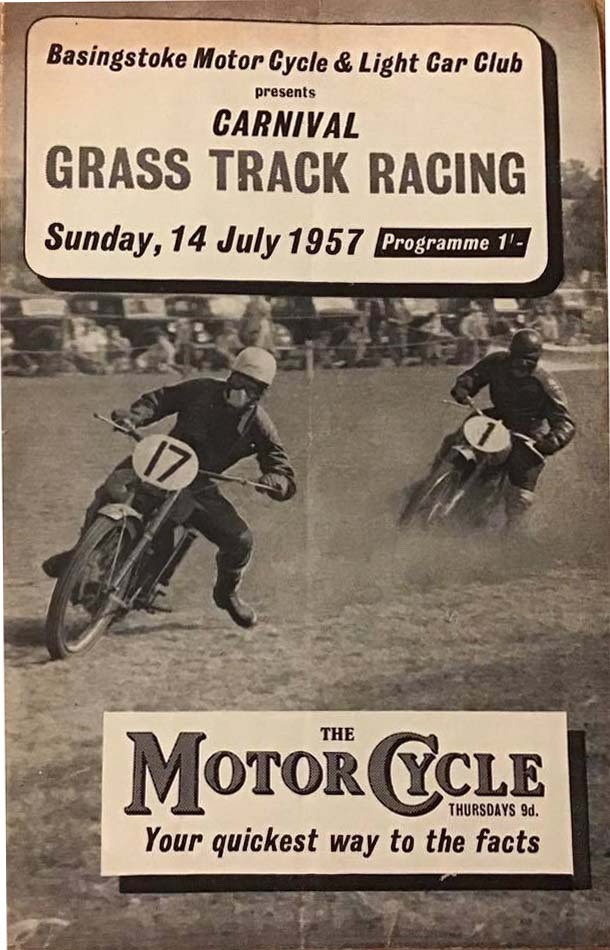
Even more surprising is the sport’s persistence to survive. No doubt largely due to its budget-friendly nature and lack of infrastructure needs, it continues on to this very day in the UK, COVID be damned. The sport’s UK websites show a plethora of events planned for 2022, including nine (yes, nine) races organized by the Auto Cycle Union in July 2022 alone. And to think that up until a few minutes ago, a vast majority of people reading this article would have not had the slightest clue that the sport even existed. And you call yourselves motorcycling fans!
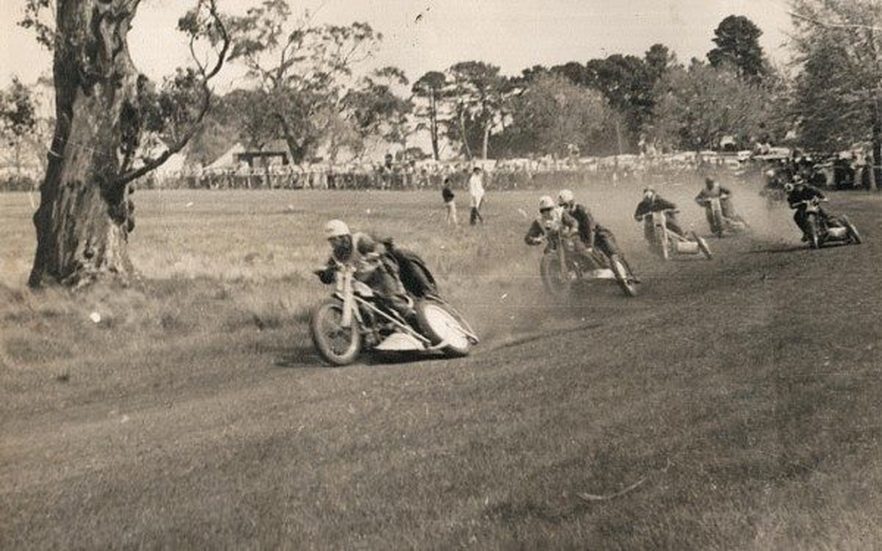
Cheap but Not So Easy
Personally, I like the idea of racing on grass. As someone who’s never raced a motorbike in a real, honest-to-goodness event, the idea of grass being slightly forgiving in both the traction and crash stakes, I’m thinking that a 250cc grasstrack racer might just be something that wouldn’t take too much of a toll—financially or physically—on my old man bones.
At least, that was what I was thinking until I watched some of the videos like the one below. Having a gentle off on some super soft, very lush British grass is one thing. But the prospect of being run over by a 1000cc grasstrack sidecar monster fully loaded with two pie-and-pint- loving English gentlemen is quite another.
Should your appetite be suitably whetted, you can find plenty of Grasstrack and Long Track racing on Youtube. Be warned, it’s really addictive stuff.


